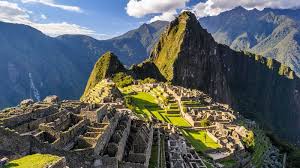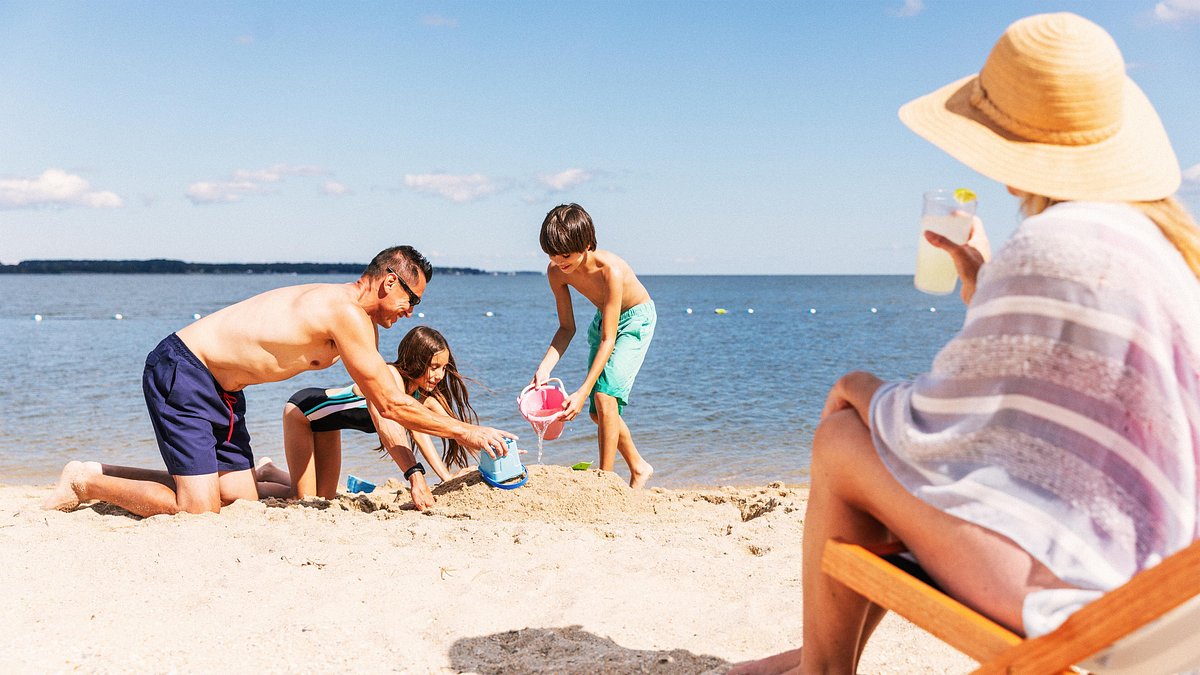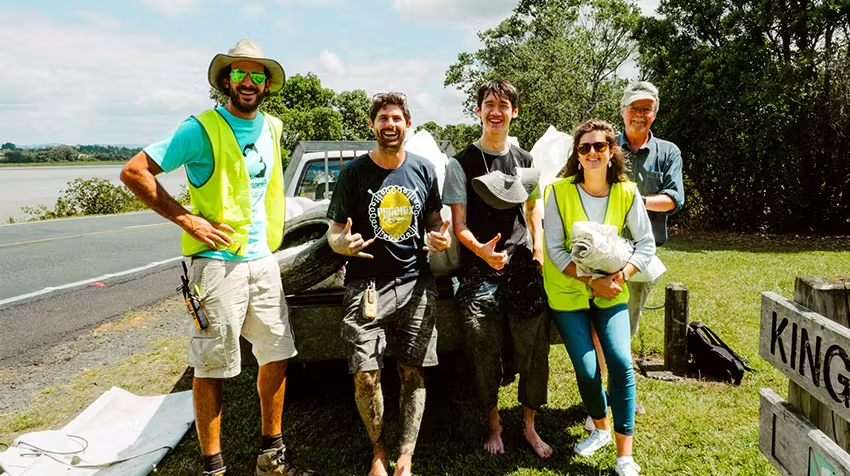
Hey there, fellow wanderer. Picture this: You’re knee-deep in a misty rainforest, the kind where sunlight filters through the canopy like golden threads, and every rustle in the underbrush could be a monkey swinging by or just the wind playing tricks. That’s the magic of nature and adventure travel in the wild—raw, unfiltered connection to places that remind you how small, yet how alive, you really are. I’ve chased sunrises over African savannas and stumbled through Patagonian trails, heart pounding from both the hike and the sheer wonder of it all. These trips aren’t just vacations; they’re resets for the soul, blending thrill with that quiet awe only wilderness can deliver. If you’re itching to trade city noise for bird calls and open skies, you’re in the right spot. Let’s dive into how to make it happen, from picking spots that steal your breath to packing smart so you can focus on the moment.
What Is Nature and Adventure Travel?
At its core, nature and adventure travel means heading into the wild with purpose—think hikes that challenge your legs, wildlife spotting that quickens your pulse, and moments of stillness amid untamed beauty. It’s not about luxury resorts or Instagram filters; it’s immersive experiences like trekking through ancient forests or kayaking glacial fjords, where you’re as much participant as spectator.
I’ve felt this pull since my first solo backpacking trip in the Rockies, where a sudden storm turned a simple ridge walk into a lesson in humility. These journeys foster a deeper bond with the planet, often weaving in elements of eco-awareness to ensure the wild stays wild.
What sets it apart from regular tourism? The emphasis on active engagement—pushing boundaries while respecting the environment—turning passive sightseeing into active discovery.
Why Choose Wilderness Adventures?
In a world glued to screens, wilderness adventures offer a rare antidote: unplugging to reconnect. They boost mental health, sharpen survival instincts, and create stories that’ll outlast any souvenir. Plus, with rising interest in sustainable escapes, these trips let you contribute to conservation, like funding anti-poaching efforts through your safari fees.
Remember my mishap in Costa Rica? I misjudged a river crossing during a rainy season hike, ending up soaked but wiser—and laughing about it later with locals over fresh ceviche. That blend of adrenaline and camaraderie? It’s why these travels stick with you, leaving you bolder and more grounded.
Beyond the personal perks, they highlight global biodiversity hotspots, urging us to protect what’s left before it’s gone.
Top Destinations for 2025 Wilderness Escapes
As we roll into 2025, certain spots are calling louder than ever, blending untouched trails with fresh access like new eco-lodges or extended park hours. From polar frontiers to tropical hideaways, here’s where the wild heart beats strongest this year.
Patagonia: End-of-the-World Epics
Straddling Chile and Argentina, Patagonia delivers dramatic glaciers, jagged peaks, and winds that whisper ancient secrets. Hike the W Trek in Torres del Paine or paddle Lago Grey amid icebergs—pure, humbling scale.
I once spent a dawn there watching condors soar; it felt like time stopped, just you and the vastness. With 2025’s improved shuttle networks, it’s easier to reach remote trails without a guide.
New sustainable camps mean less footprint, more stars overhead at night.
Galápagos Islands: Darwin’s Living Lab
These volcanic specks off Ecuador teem with fearless creatures—blue-footed boobies dancing, giant tortoises lumbering. Snorkel with sea lions or hike Sierra Negra’s lava fields for a crash course in evolution.
On my visit, a hammerhead shark glided by during a dive, close enough to count its spots—thrilling, yet a reminder of fragile ecosystems. 2025 brings expanded marine reserves, perfect for ethical wildlife encounters.
Opt for small-group cruises to keep it intimate and low-impact.
African Savannas: Serengeti and Beyond
Tanzania’s Serengeti hosts the Great Migration, a thundering ballet of wildebeest and predators. Combine game drives with Maasai village walks for cultural depth amid golden grasslands.
I teared up witnessing a lion pride at dusk; it’s raw life in motion. Look for 2025’s new balloon safaris over Ngorongoro Crater, blending luxury with conservation ties.
Zanzibar extensions add beach recovery post-safari.
New Zealand’s South Island: Fiordland Trails
Fjords carve deep into lush valleys here, ideal for kayaking Milford Sound or multi-day hikes on the Kepler Track. Waterfalls cascade, kea parrots cheekily steal your snacks.
Hiking there post a tough breakup, I found clarity amid the ferns—nature’s therapy at its finest. 2025’s e-bike rentals make trails accessible for all levels.
Milford’s glowworm caves? A starry underground escape.
Costa Rica: Rainforest Rhythms
Cloud forests, volcanoes, and sloth-filled canopies define this biodiversity powerhouse. Zipline Arenal or surf Tamarindo’s breaks for varied thrills.
Spotting a quetzal bird mid-hike felt like winning the wildlife lottery. With new 2025 eco-trails in Corcovado, it’s prime for off-grid immersion.
Sustainable lodges ensure your stay supports reforestation.
Essential Gear for Wild Expeditions
Packing for the wild is like prepping for a blind date with nature—you want reliable, versatile pieces that won’t weigh you down. Focus on layers, durability, and multi-use items to handle everything from sudden squalls to balmy evenings.
Start with a sturdy backpack like the Osprey Atmos AG 65—comfy for long hauls and with smart compartments. Add quick-dry synthetics for base layers, a fleece mid, and a waterproof shell. Footwear? Trail runners like Hoka Speedgoats grip slick rocks without blisters.
Don’t skimp on the “Ten Essentials”: navigation tools, sun protection, insulation, illumination, first-aid, fire starters, repair kit, food, water (purification included), and emergency shelter. I swear by my Garmin inReach for off-grid SOS—saved my bacon in Patagonia fog.
For tech-light souls, a journal beats a gadget every time.
Gear Comparison Table
| Item | Budget Pick | Premium Pick | Why It Matters |
|---|---|---|---|
| Backpack | REI Co-op Flash 55 ($199) | Hyperlite Mountain Gear Southwest 55 ($399) | Ultralight for multi-day treks; weatherproof Dyneema fabric lasts seasons. |
| Hiking Boots | Merrell Moab 2 ($120) | Salomon Quest 4 GTX ($230) | Gore-Tex for wet trails; superior ankle support on uneven terrain. |
| Tent | REI Half Dome SL 2+ ($329) | Big Agnes Copper Spur HV UL2 ($530) | Spacious for couples; freestanding ease in rocky campsites. |
| Water Filter | Sawyer Squeeze ($40) | Katadyn BeFree ($45) | Filters 100,000 gallons; compact for day hikes or thru-treks. |
This setup keeps you agile—I’ve hauled similar kits across the Andes without regret.
Staying Safe in the Untamed Wild
Safety in the wild isn’t about fear; it’s about respect—for weather whims, wildlife quirks, and your own limits. Prep turns potential pitfalls into plot twists you laugh about later.
Tell someone your itinerary, carry a PLB (personal locator beacon), and hike with buddies when possible. Check forecasts obsessively; I’ve dodged flash floods by bailing early in Yellowstone.
Wildlife-wise, keep distance—bears in Alaska demand bear spray and noise. Hydrate like it’s your job, and listen to your body; that twinge could signal trouble.
Humor helps: Once, I tripped into a creek chasing a photo—wet boots, zero regrets, full lesson in footing.
Pros and Cons of Solo vs. Group Wild Travel
Solo Travel Pros:
- Total freedom to set your pace and pivot on whims.
- Deep self-reliance builds confidence like nothing else.
- Serene solitude for reflection amid the roar of rivers.
Solo Travel Cons:
- Higher risk if injured; no instant backup.
- Navigation errors hit harder without shared brains.
- Lonelier evenings around the campfire.
Group Travel Pros:
- Shared loads lighten packs and spirits.
- Diverse skills cover gaps, like knot-tying or fire-starting.
- Built-in stories and safety nets for emergencies.
Group Travel Cons:
- Schedules clash with personal rhythms.
- Groupthink can skip the quiet moments you crave.
- Larger footprints if not eco-minded.
I lean group for remote spots, solo for familiar trails—balance is key.
Sustainable Practices for Eco-Adventurers
Traveling wild means treading lightly; we’re guests, not conquerors. Sustainable nature travel swaps exploitation for empowerment—choosing operators who fund habitat protection and local jobs.
Follow Leave No Trace: Pack out trash, camp 200 feet from water, minimize fires. Offset flights via Sustainable Travel International, and support indigenous-led tours.
In the Amazon, I joined a community-guided canoe trip—learning medicinal plants while boosting their economy. Felt right, not preachy.
Offset your carbon, eat local, and skip single-use plastics; small swaps echo big.
Real Stories from the Trail
Nothing beats hearing it firsthand. Take Sarah from Seattle: On a Nat Hab polar bear trek in Churchill, she watched a momma bear teach her cub to hunt seals. “It was fierce and tender—shifted how I see survival,” she shared. Or Mike’s Patagonian folly: A gusty ridge hike turned epic when winds pinned him down. “Guides’ quick thinking saved the day; now I double-check layers.”
These tales remind us: The wild humbles, heals, and hooks you for life. What’s your trail whisper?
People Also Ask
Drawn from real Google searches, these hit common curiosities about diving into the wild.
What is the best time of year for nature and adventure travel?
Seasons vary by spot—summer for Alaska’s midnight sun hikes, dry season (June-October) for African safaris to spot migrations. Check local patterns; I time Patagonia for shoulder months to dodge crowds.
How can I prepare physically for wilderness adventures?
Build endurance with weekly hikes, strength training, and cardio. Start light, layer in elevation. My prep? Hill repeats and yoga—keeps you nimble without burnout.
What are some beginner-friendly wild destinations?
Costa Rica’s gentle volcano trails or New Zealand’s easy fiord walks. Guided options ease the learning curve; I cut teeth on Iceland’s puffin-spotting paths.
Is adventure travel safe for families?
Absolutely, with age-appropriate picks like ranger-led U.S. park tours. Focus on easy trails, wildlife from afar. Our family Amazon float? Kids still rave about pink dolphins.
How does adventure travel support conservation?
Fees fund parks, like WWF partnerships protecting habitats. Choose certified operators; your trek in Borneo helped orangutan rescues.
Best Tools and Outfits for Your Quest
Navigational intent met: Gear up with trusted names. For transactional ease, snag packs from REI or apps like AllTrails for route plotting.
Top outfits? Intrepid’s wildlife tours for guided immersion, or self-guided via The Natural Adventure for flexibility. Budget $2,000-5,000 per person for a week, including flights.
FAQ
Q: What’s the difference between ecotourism and sustainable adventure travel?
A: Ecotourism zeros in on natural areas with education and low impact, like guided Galápagos snorkels. Sustainable adventure broadens it to all trips minimizing harm—think carbon offsets on any hike. Both aim to preserve, but ecotourism’s niche.
Q: How do I choose a responsible tour operator?
A: Look for GSTC certification or WWF ties. Read reviews for local hiring; avoid elephant rides. Nat Hab’s my go-to for ethical safaris.
Q: Can beginners handle multi-day wilderness treks?
A: Yes, with prep. Start with 2-3 dayers like Iceland’s Laugavegur; build fitness. Guides handle logistics—I did my first with zero regrets.
Q: What’s the environmental impact of flying to remote wild spots?
A: High emissions, but offset via verified programs. Combine with overland legs; my Antarctic flight guilt eased knowing it funded penguin research.
Q: How has climate change affected popular adventure destinations?
A: Glaciers recede in Patagonia, trails flood in the Alps. 2025 trips now include resilience talks—visit resilient spots like rewilding Finland.
There you have it—your blueprint to wild wonders. Whether chasing auroras or elephant herds, these escapes remind us: The best journeys leave us changed, footprints faint, hearts full. What’s calling you first? Grab that pack; the trail awaits.




More Stories
World’s Best Countries For Adventure Tourism, 2025
What Is Adventure Travel: The Complete Guide
What Is Adventure Travel: The Complete Guide